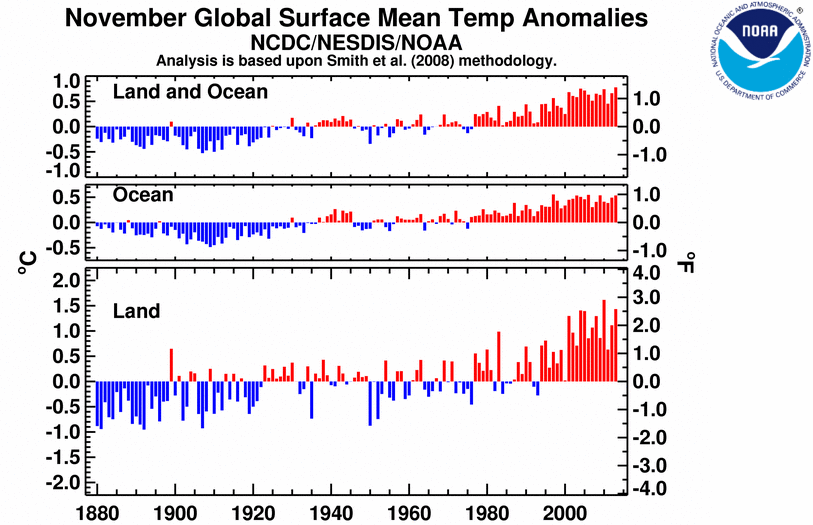According to the National Climatic Data Center (NCDC), November 2013 is the warmest November recorded since record-keeping began back in 1880. What does this mean? It means November 2013 becomes the 345th consecutive month of seeing temperatures above the 20th century average. It might have been cold where you live in the month of November, but that wasn’t the case for everyone. In this post, we will look at who saw the warmest temperatures and who experienced below-average temperatures across the globe in November 2013.
First, the basics. According to the NCDC, temperatures across the globe last month, including both land and oceans, averaged at 0.78°C (1.40°F) above the 20th century average. The high temps in November 2013 caused lats month to beat out November 2004 as the warmest November ever recorded.

Who saw the warmest conditions during the month of November 2013? If you lived in Asia, eastern Europe, Africa, and South America, you experienced above-average temperatures for the month.
Meanwhile, especially in the eastern United States, we saw below-average temperatures. Southwest Greenland and parts of north/central Australia also had below-average temperatures.
Globally, land temperatures averaged at 1.43°C (2.57°F) above the 20th century average of 5.9°C (42.6°F). That gives November 2013 the second-highest temperature ranking on land ever recorded (right behind 2010).
Global ocean temperatures were 0.54°C (0.97°F) above the 20th century average of 15.8°C (60.4°F), tying with 2009 as the third-highest for November, ever.

What else makes the warmth of November 2013 so interesting to learn about? It was the sixth-highest monthly departure from average among all months on record and the highest since March 2010. How is that significant? We were stuck in an El Niño that year, which is known to typically boost global temperatures up, as waters off the central-eastern Pacific Ocean experiences above-average temperatures. One of the hottest years ever recorded was in 1998, a year in which we had an unusually strong El Niño. Many believe the huge spike in global temperatures in 1998 was due in large to a mix of the intense El Niño and a warming climate.
Remember, weather can be like a seesaw. If your location on the globe is up, seeing hot temperatures, another spot on the globe is likely to be down, experiencing below-average temperatures.
Or let’s use a different anology. Weather changes, just like your mood. Climate changes slowly through time, however, and can be compared to your personality.
Bottom line: November 2013 was the warmest November recorded globally since record-keeping began in 1880. Just because it’s cold where you live does not mean someone else is experiencing above-average temperatures!











